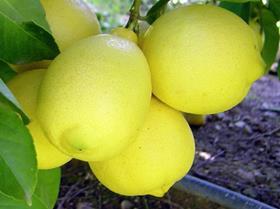
South Africa exported some 19m cartons of lemons during the past season, marking an increase of 26 per cent, or 4m cartons higher than the previous campaign.
However, returns dropped and there are indications that the recent boom in the lemon market may be slowing down.
Since 2012 the hectares planted with lemons in South Africa have more than doubled and growers says this growth in production is now reflected in rapidly increasing export volumes.
“Lemon growers who persevered through the period 2000 to 2010 welcomed the change of fortunes for the sector after 2012/13,” said the Citrus Growers’ Association, CGA, in its seasonal review. “Due to a number of reasons prices climbed to historic highs. On the supply side the biggest Southern Hemisphere exporter suffered a number of years of climatic difficulties, as did many other lemon producing countries.”
The CGA noted that on the demand side the health attributes of lemons attracted many to the sector, especially in Asia.
“The diversion of lemons to the export market had an effect on the local market and processed returns, as the lemon became a scarce commodity. Across the country, growers were attracted to the sector, resulting in new plantings across the country.”
These plantings are now getting to a stage that they are producing export grade fruit and already prices are under pressure, the CGA continued.
“Although, official 2017 prices have as yet not been published”, said the CGA, “and reports indicate a sharp decrease of prices in most markets.
“The lemon plantings over the past five or so years are now starting to reach maturity,' the group continued. 'After two years of 15m carton export volumes, 2017 saw a record 19m cartons being exported. Whereas the 2012 tree census showed 5,514ha under lemons, the 2017 census shows a doubling to 11,685ha.”
The CGA said it expects export volumes to remain on the increase, and that prices will come under pressure.
Every export destination experienced an increase in lemon volumes from South Africa in 2017, except the UK, which dropped from 1.5m to 1.4m cartons.
The Middle East remains the leading market, increasing from 6.5m to 7.5m cartons.
“Europe is second, increasing from 3.2m to 3.8m cartons,' the CGA added. 'Both South East Asia (2m to 3m) and Russia (1m to 2m) increased by 1m cartons. North America increased marginally from 0.6m to 0.8m cartons.”



